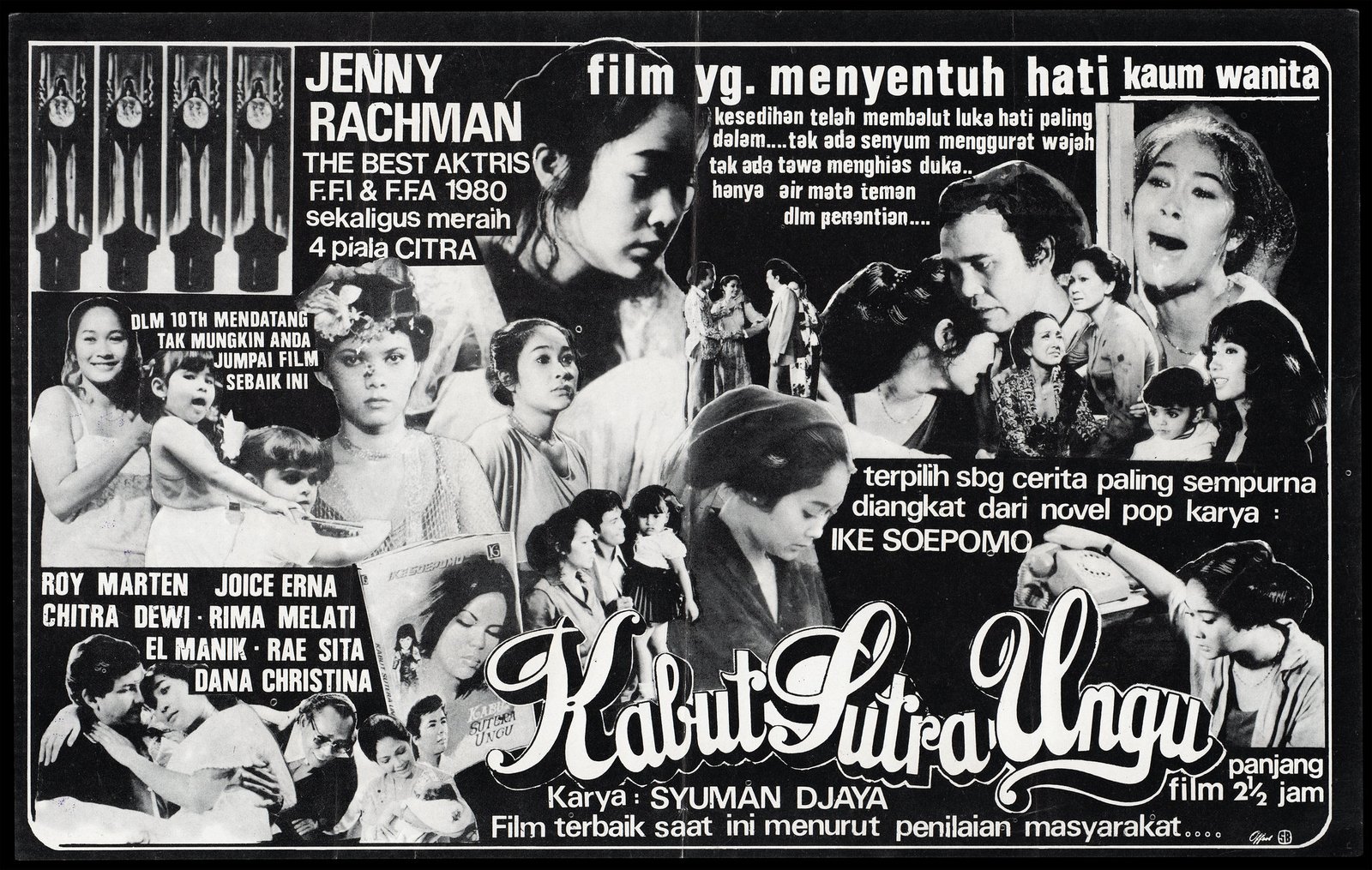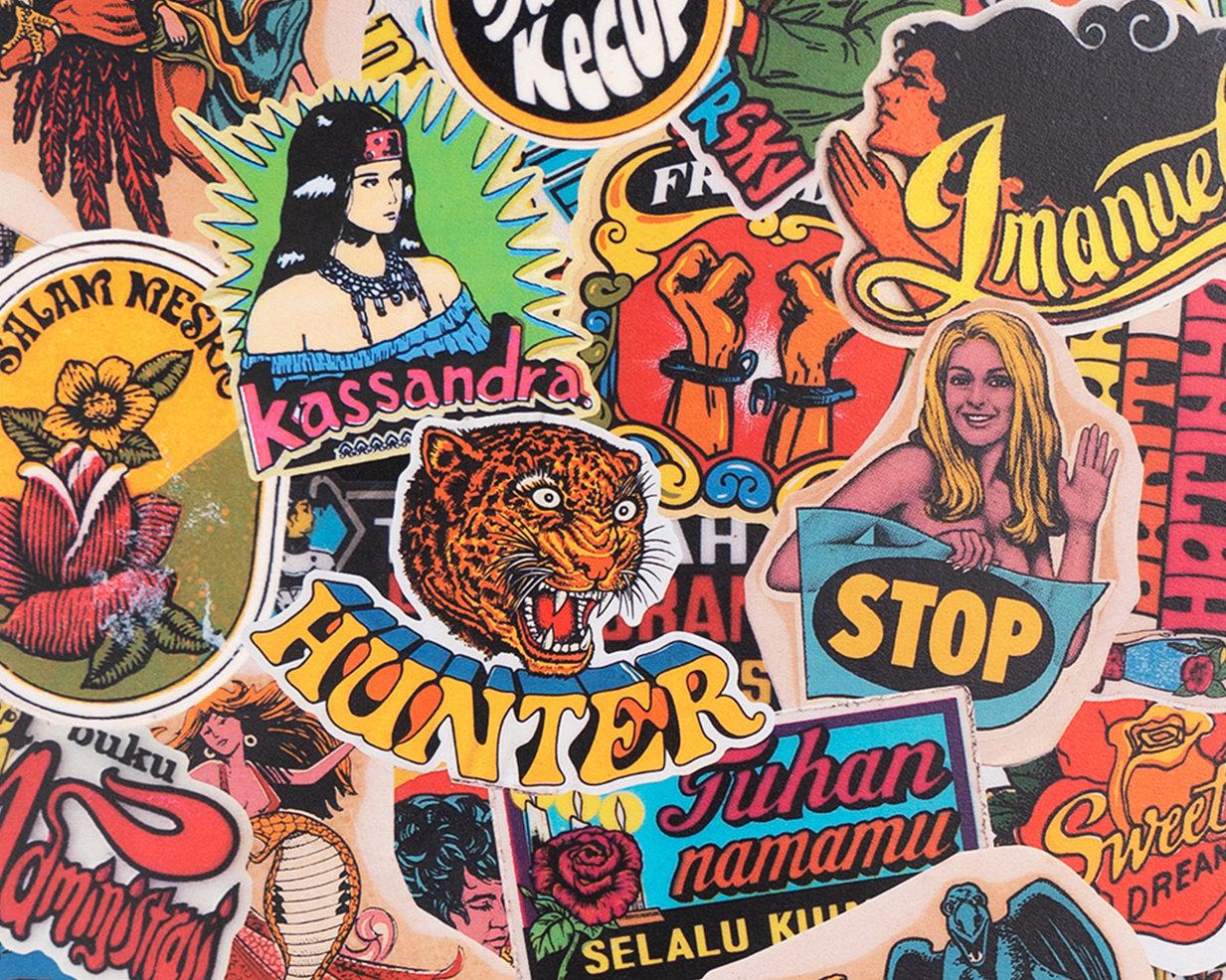
Love and sexuality are essential elements of human life and eternal themes that never fail to captivate audiences in film. While some might consider it a cliché, Indonesian romantic and erotic films have held a special place in the hearts of Indonesians since their emergence and subsequent dominance in the 1970s.
The abolishment of the anti-Western policies during the Soekarno era marked the beginning of an influx of imported films into Indonesia. Consequently, an increasing number of imported films featuring explicit scenes of sex and violence found their way into Indonesian cinemas. Indonesian audiences enthusiastically embraced these imported films, which in turn served as an inspiration for local filmmakers to produce similar content.
The success of the 1970 film “Bernafas Dalam Lumpur,” starring Suzanna, served as a turning point in the proliferation of other erotic films, as well as comedies and action films infused with sexual elements and the exploitation of the female body. The erotic aspects of these films were evident in their titles, scenes, and promotional posters displayed in public places.

Promotional flyer for Beranak dalam Kubur (1970). Source: Indonesian Film Poster Archive
It has yet to be determined when stickers started appearing in Indonesian urban spaces. However, one thing is certain: stickers have long served as a means of expressing ‘free but proper’ speech. The burgeoning entertainment industry since the 1970s provided an opportunity for sticker manufacturers like AMP Malang to capitalize on the trend by designing and mass-producing stickers inspired by popular films and songs of the time.
Among the diverse array of designs, stickers based on romantic films and love songs hold a special place in the hearts of many urban Indonesians. They are manufactured in flashy colors, crafted modestly to minimize production costs. Their designs are extravagant, employing vibrant, eye-catching colors yet following a formulaic layout – often depicting two lovebirds or a woman surrounded by flowers, ribbons, and other endearing elements. The film or song’s title serves as a final touch, placed adjacent to the illustration. These designs are printed on the inside of mica plastic for easy application on various surfaces, including glass.
Given the continually reproduced variety of designs, these stickers have been well-received. Even today, they remain commonly found in urban spaces, notably adorning the windows of public transportation. Behind their visually appealing imagery lies a nostalgia that harks back to an era predating smartphones – a time when wooing a sweetheart entailed sweet talks and messages sent through radio shows.
Let’s delve into five examples from Grafis Nusantara’s collection, showcasing stickers inspired by Indonesian erotic romance films from the 1970s to the 1980s.

Kabut Sutra Ungu sticker. (Source: Rakhmat Jaka, Grafis Nusantara)
Kabut Sutra Ungu (1980)
In Indonesia, the color purple is synonymous with widowhood, symbolizing a woman’s profound grief. Its popularity is believed to have been significantly influenced by one of the most renowned films of the 1980s, “Kabut Sutra Ungu” (Mist of the Purple Silk, 1980). Directed by Sjumandjaja, who was also known for his work on several other films such as “Si Doel Anak Betawi” (Doel the Betawi Child, 1972) and “Laila Majenun” (Laila is Possessed, 1975), “Kabut Sutra Ungu” was based on the novel of the same name by Ike Soepomo. The storyline revolves around Miranti’s resilience as a widow and her journey through life following her husband’s tragic death in an accident.
According to the Perusahaan Film Nasional Indonesia (Perfini), “Kabut Sutra Ungu” achieved a remarkable milestone by becoming the most-watched film in Jakarta in 1980, attracting 488,865 viewers. The film’s success was further validated by the receipt of four trophies at the Indonesian Film Festival (FFI), with Jenny Rachman honored as the best female actor and the movie being recognized for the best original story.

Promotional flyer for Kabut Sutra Ungu (1980). Source: Indonesian Film Poster Archive

Noda dan Asmara sticker. (Source: Rakhmat Jaka, Grafis Nusantara)
Noda dan Asmara (1977)
Erotic romance films were familiar territory for Indonesian cinephiles in the 1970s and 1980s. The specter of film censorship did not loom as menacingly over Indonesian film producers during that era, granting them the freedom to delve into explicit portrayals of sex and intimacy in their works, ranging from risqué dialogues to provocative camera angles. It is unsurprising that eroticism in films was often manipulated to pique public interest.
“Noda dan Asmara” (1977) stands as an exemplar of an erotic romance film that tantalized audiences with its exploration of ‘manliness’ – narrating the struggles of a man attempting to overcome impotence following an accident. The film’s daring and taboo themes for its time led both the cinema and the media to promote “Noda dan Asmara” in a “naughty” manner, utilizing carefully selected language and still images extracted from the film. Furthermore, the presence of Yati Octavia, already renowned for her roles in other romantic dramas, heightened the anticipation of film enthusiasts eager to immerse themselves in the narrative.

Promotional flyer for Noda dan Asmara (1977). Source: Indonesian Film Poster Archive

Mencari Cinta sticker. (Source: Rakhmat Jaka, Grafis Nusantara)
Mencari Cinta (1979)
Most of us must have heard the song “Arjuna Mencari Cinta” (Arjuna Seeking Love) by Dewa, which narrates a man’s protracted quest for love. However, were you aware that the songwriter, Ahmad Dhani, drew inspiration from a novel that was subsequently adapted into a film?
“Arjuna Mencari Cinta” (1977), penned by Yudhistira ANM Massardi, spins the tale of Arjuna, a clever young man whose charisma resembles that of Arjuna in the Indian epic Mahabharata. The novel’s adept fusion of wayang (traditional Javanese puppet theater) characters with contemporary narratives propelled “Arjuna Mencari Cinta” to win the 1977 Best Novel award bestowed by the Yayasan Buku Utama, Departemen P dan K, along with two sequel novels. The novel’s triumph motivated director Bobby Sandy to transform “Arjuna Mencari Cinta” into a film, featuring Herman Felani and Lydia Kandou, under the new title “Mencari Cinta” (1979).

Promotional flyer for Mencari Cinta (1979). Source: Indonesian Film Poster Archive

Badai Pasti Berlalu sticker. (Source: Rakhmat Jaka, Grafis Nusantara)
Badai Pasti Berlalu (1977)
“Badai Pasti Berlalu” initially commenced as a serialized story by Marga T, published in the Kompas daily. However, owing to its numerous fans, the story eventually materialized into a novel in 1974. The novel’s remarkable sales figure reached 24,000 copies, a substantial figure at the time, solidifying “Badai Pasti Berlalu” as a bestseller.
The enduring success of “Badai Pasti Berlalu” is evidenced by its adaptation into a feature film on two occasions. The initial version, released in 1977 and helmed by Teguh Karya, featured renowned actors and actresses such as Christine Hakim, Roy Marten, Slamet Rahardjo, and Mieke Widjaja. Subsequently, a remake was brought to audiences in 2007, directed by Teddy Soeriaatmadja and starring Vino G. Bastian and Raihaanun.
The popularity of “Badai Pasti Berlalu” transcended the realm of cinema, extending to other forms of artistic expression. A theme album sung by Chrisye was released as a complement to the first film, later repurposed as the theme song for the remake. This album ultimately secured the top position in the 150 Best Indonesian Albums list published by Rolling Stone Indonesia Magazine in 2007.

Promotional flyer for Badai Pasti Berlalu (1977). Source: Indonesian Film Poster Archive

Gita Cinta sticker. (Source: Rakhmat Jaka, Grafis Nusantara)
Gita Cinta dari SMA (1979) & Puspa Indah Taman Hati (1979)
The popularity of Teenlit novels among Indonesian high school students is intricately linked to the influence of Eddy D Iskandar, often hailed as the pioneer of the genre. The dialogues in his novels flow effortlessly and are engaging, particularly for the teenage demographic. Eddy’s works, centering around teenage themes, have frequently been adapted into soap operas. Notable examples include “Cewek Komersil,” “Cowok Komersil,” “Cinta Sang Bintang,” “Buat Aku Tersenyum,” “Semau Gue,” “Roman Picisan,” “Sok Nyentrik,” “Musim Bercinta,” “Bunga Cinta Kasih,” “Beningnya Hati Seorang Gadis,” and many others.
Galih & Ratna are arguably the most renowned couple from Eddy’s novels, etched into the memory of even the younger generation, owing to the popularity of a Chrisye song inspired by their story. Originally composed as a soundtrack for the film adaptation of Eddy’s novel “Gita Cinta dari SMA” (1979), the song has since been covered by numerous Indonesian artists over the years. The film was directed by Arizal, a recipient of the Citra Award in the Best Children’s Film category for his work on “Senyum dan Tangis” (1974), featuring Rano Karno and Yessy Gusman.
The film also introduced the theme of a forbidden love story reminiscent of Romeo and Juliet to its Indonesian audiences, amassing a dedicated following. This reception inspired Arizal to create its sequel, “Puspa Indah Taman Hati” (1979), ultimately bestowing a happy ending upon Galih and Ratna.
–


![[D/R]ekonstruksi](https://grafisnusantara.com/wp-content/uploads/2022/12/DSC29481-OK-3-1-scaled.jpg)
